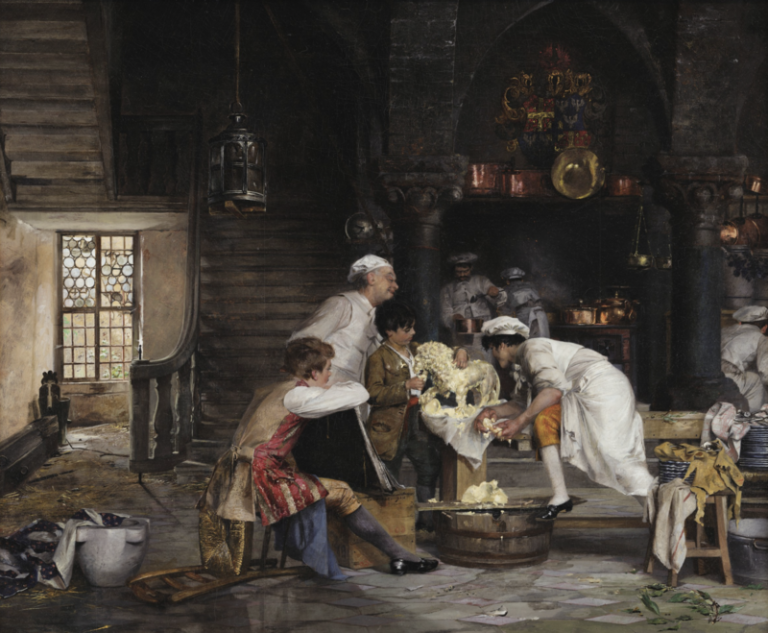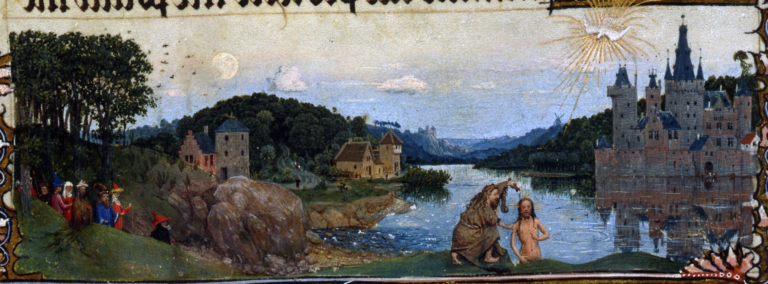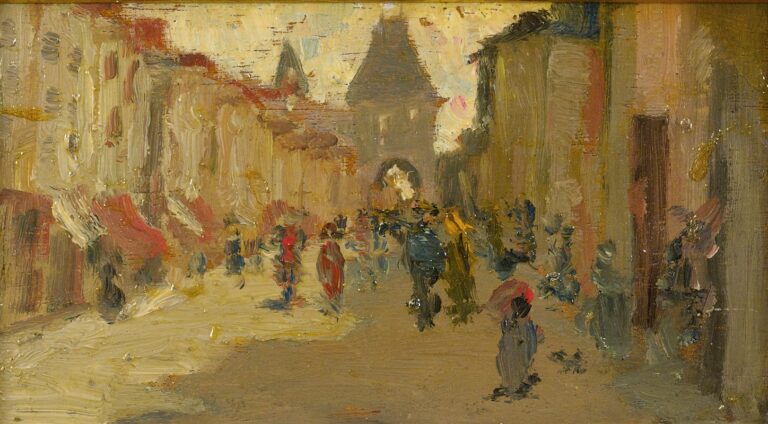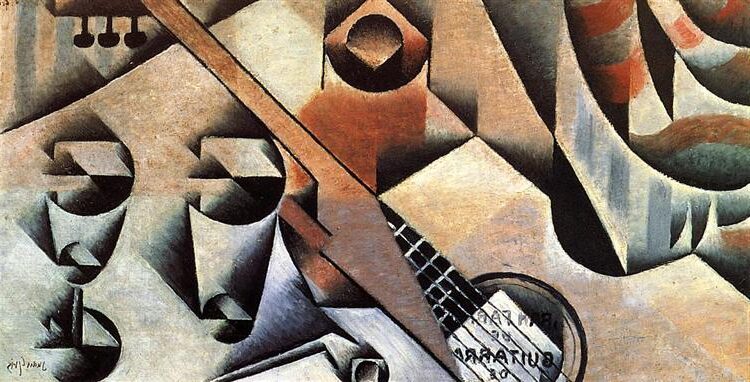Georges Seurat Painter: Pioneer of Pointillism and Neo-Impressionism
Born: 2 December 1859, Paris, France
Death: 29 March 1891, Paris, France
Art Movement: Post-Impressionism, Neo-Impressionism, Pointillism
Nationality: French
Teacher: Henri Lehmann
Institution: École Municipale de Sculpture et Dessin and École des Beaux-Arts
Georges Seurat Painter: Pioneer of Pointillism and Neo-Impressionism
Life and Education
Georges Seurat’s life journey shaped his revolutionary approach to painting. His formal education and artistic influences helped develop his distinctive pointillist technique that would forever change the art world.
Early Life and Family
Georges-Pierre Seurat was born in Paris on December 2, 1859, to a middle-class family. His father, Antoine Chrysostome Seurat, was a legal official who had accumulated some wealth. His mother, Ernestine Faivre, came from a prosperous Parisian family.
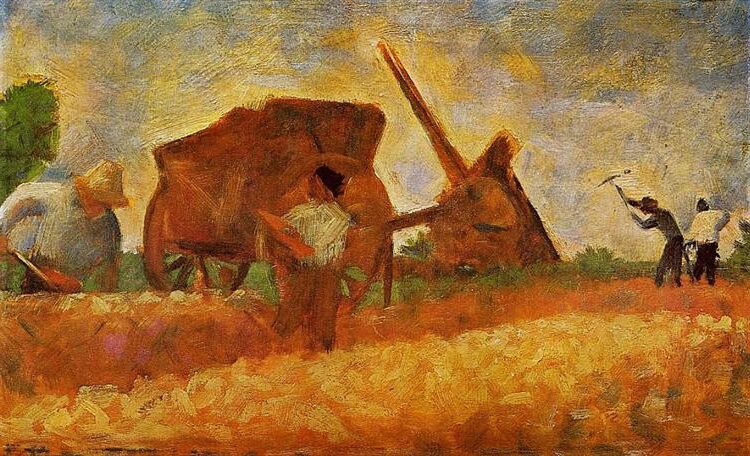
The Stone Breakers (Les Terrassiers) by Georges Seurat (1883)
Young Georges grew up in a comfortable environment that allowed him to pursue his artistic interests from an early age. The family lived in the Boulevard de Magenta, a relatively new and fashionable area of Paris.
Seurat showed artistic talent during his childhood, and his parents supported his creative pursuits. He began drawing at an early age, demonstrating remarkable skills in observation and precision.
Formal Art Education
In 1875, at age 16, Seurat began studying art at the École Municipale de Sculpture et Dessin, under sculptor Justin Lequien. This initial training focused on classical techniques and drawing.
Two years later, in 1878, he enrolled in the prestigious École des Beaux-Arts in Paris. There, he studied under academic painter Henri Lehmann, a former student of the renowned Jean-Auguste-Dominique Ingres.
Seurat’s formal education was relatively brief. He left the École des Beaux-Arts after about a year, preferring to study independently at libraries and museums. He particularly spent time at the Louvre, copying works by old masters.
Military service interrupted his artistic development from 1879 to 1880. After completing his service in Brest, he returned to Paris and dedicated himself fully to art.
Influences and Contemporaries
Seurat was deeply influenced by color theory and optical science. He studied writings by Michel Eugène Chevreul, Ogden Rood, and Charles Blanc on color perception and contrast.

Peasants Driving Stakes (1882) by Georges Seurat
The Impressionist movement, particularly the works of Claude Monet and Camille Pissarro, impacted Seurat’s early artistic direction. However, he sought to bring more structure and science to the spontaneous Impressionist approach.
His friendship with fellow artist Paul Signac proved crucial to his artistic development. The two collaborated closely and together developed the pointillist technique.
Seurat also admired the harmonious compositions of Pierre Puvis de Chavannes and the Egyptian and Greek art he studied at the Louvre. These influences helped him create works with balanced, almost mathematical compositions.
Artistic Style and Techniques
Georges Seurat revolutionized painting in the late 19th century through his methodical approach to color and composition. His innovative techniques transformed how artists thought about color relationships and visual perception.
Development of Pointillism
Seurat developed Pointillism (also called Divisionism) in the 1880s as a scientific approach to painting. This technique involved applying small dots of pure color side by side on canvas. When viewed from a distance, these dots optically blend in the viewer’s eye to create luminous images.

Soldier Fencing, Another Reclining (1880)
Seurat based his method on color theories by scientists like Michel Eugène Chevreul and Ogden Rood. He studied how complementary colors intensify each other when placed side by side.
Unlike the spontaneous brushwork of the Impressionists, Seurat’s approach was methodical and precise. He often spent over a year on a single painting, carefully applying thousands of tiny dots with calculated precision.
His technique required immense patience and planning. Seurat would create numerous preliminary drawings and oil sketches before beginning his final canvases.
Use of Color and Light
Seurat’s understanding of color relationships was revolutionary. He rejected the traditional mixing of pigments on a palette, believing this dulled their vibrancy.
Instead, he applied pure colors in tiny dots, allowing the eye to mix them optically. This created a vibrant, shimmering effect that captured light in new ways.
His palette typically included:
- Primary colors: red, blue, yellow
- Secondary colors: orange, green, purple
- Earth tones: ochre, sienna, umber
Seurat paid special attention to the effects of different lighting conditions. He studied how sunlight, shadow, and artificial light affected color perception.
He often used complementary colors (opposites on the color wheel) to create visual tension and enhance brightness. This careful orchestration of color gave his paintings their distinctive luminous quality.
Notable Artworks
“A Sunday Afternoon on the Island of La Grande Jatte” (1884-1886) stands as Seurat’s masterpiece. This large canvas demonstrates his Pointillist technique at its most refined, depicting Parisians relaxing by the Seine River.
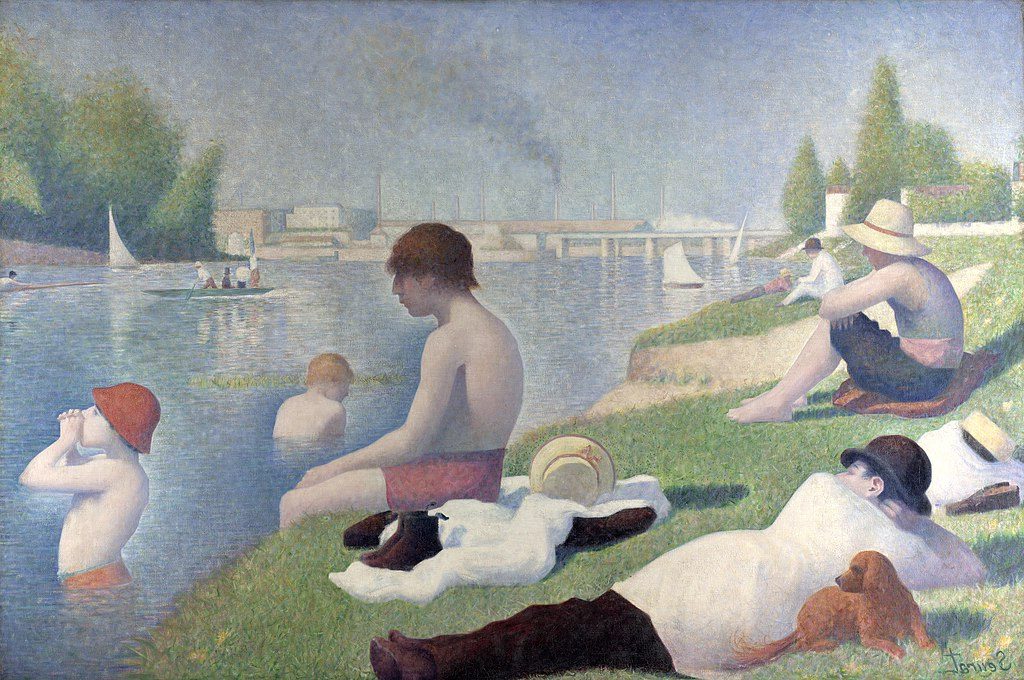
Bathers at Asnières, 1884 – Georges Seurat
“Bathers at Asnières” (1884) shows his early development of the technique. The painting portrays working-class men relaxing by the Seine, with meticulous attention to light and shadow.
“The Circus” (1890-1891), his final major work, reveals Seurat’s continued experimentation with color theory. Though left unfinished at his death, it showcases his evolving style.
“The Channel at Gravelines” series (1890) demonstrates his application of Pointillism to landscape. These smaller works display his careful observation of coastal light and atmosphere.
Each painting reflects Seurat’s mathematical precision and scientific approach to color that fundamentally changed modern art.
Legacy and Impact
Georges Seurat‘s distinctive painting technique and artistic vision continue to resonate in the art world today. His methodical approach to color and composition transformed painting practices and influenced generations of artists who followed.
Contributions to Post-Impressionism
Seurat helped establish Neo-Impressionism, a movement that brought scientific precision to the spontaneity of Impressionism. His pointillist technique—applying small dots of pure color that blend in the viewer’s eye—offered a revolutionary approach to creating luminous images. This method provided a structured alternative to the loose brushwork of the Impressionists.
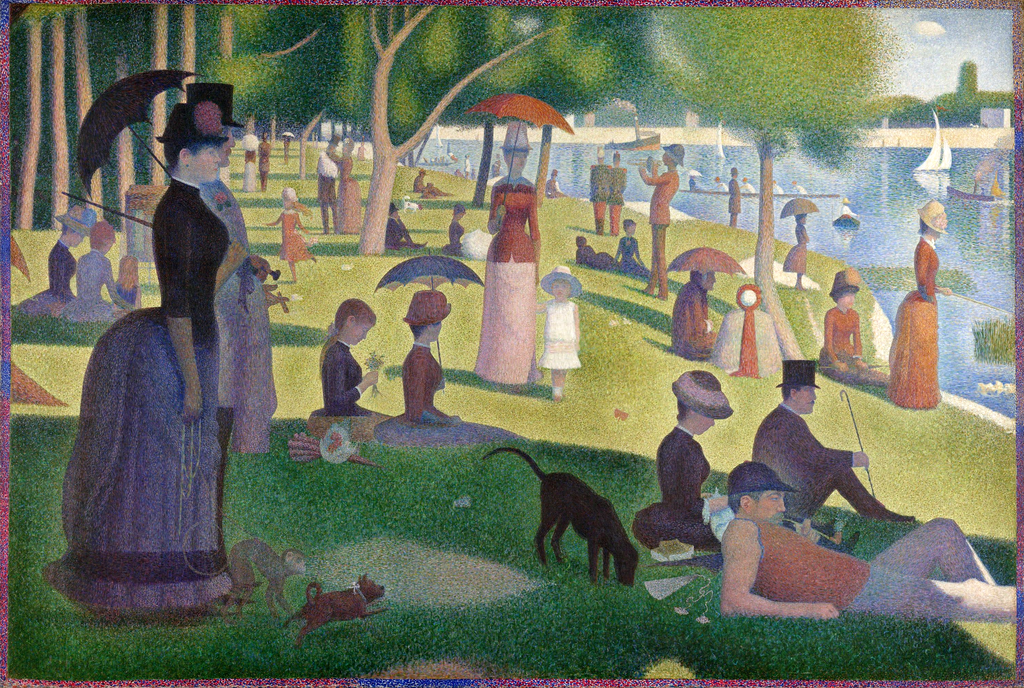
A Sunday Afternoon on the Island of La Grande Jatte, 1884–1886
His masterpiece “A Sunday Afternoon on the Island of La Grande Jatte” (1884-1886) exemplified his theory of optical mixing and demonstrated how science could inform artistic practice. Despite his short career, Seurat developed a complete color theory system that emphasized the importance of complementary colors and systematic composition.
His meticulous approach to painting influenced other artists like Paul Signac and Camille Pissarro to experiment with divisionism and pointillism.
Influence on Modern Art
Seurat’s work laid important groundwork for several 20th-century art movements. His emphasis on geometric structure and color relationships directly influenced:
- Cubism: Artists like Picasso appreciated Seurat’s analytical approach to form
- Op Art: His understanding of optical effects inspired artists creating visual illusions
- Color Field painting: His theories about pure color influenced abstract expressionists
Seurat’s scientific approach to color and composition encouraged artists to think systematically about their work. His bold simplification of forms and interest in the emotional effects of line and color influenced Expressionism and abstract art.
Many modern designers and digital artists still apply Seurat’s color theories in their work today.
Recognition and Museums
Seurat’s works are now treasured in prestigious museums worldwide. “A Sunday Afternoon on the Island of La Grande Jatte” has become an iconic image in Western art and draws thousands of visitors to the Art Institute of Chicago annually.
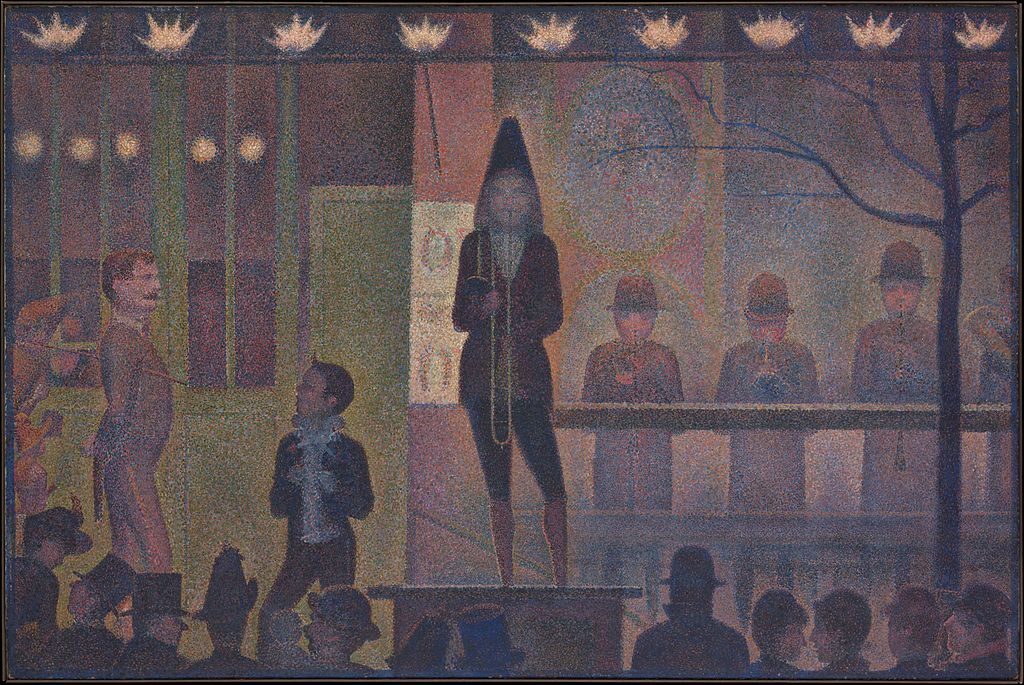
Circus Sideshow (Parade de Cirque), 1887–88 by Georges Seurat
Other major Seurat collections can be found at:
| Museum | Notable Works |
|---|---|
| Museum of Modern Art, New York | “Port-en-Bessin” series |
| National Gallery, London | “Bathers at Asnières” |
| Musée d’Orsay, Paris | “Le Cirque” |
Art historians increasingly recognize Seurat as a pivotal figure who bridged 19th-century Impressionism and 20th-century Modernism. His theoretical writings continue to be studied by art students.
Though he died at just 31, Seurat’s innovations in color theory and painting technique secured his place as one of art history’s most important figures.
Frequently Asked Questions
Georges Seurat’s revolutionary artistic techniques and significant contributions to art history have sparked many questions among art enthusiasts. His innovative approaches to color, composition, and technique fundamentally changed painting during the late 19th century.
What artistic technique is Georges Seurat known for pioneering?
Georges Seurat pioneered the technique known as Pointillism. This method involves applying small, distinct dots of pure color in patterns to form an image.
Instead of blending colors on a palette, Seurat placed tiny dots of different colors side by side. When viewed from a distance, these dots optically blend in the viewer’s eye to create the intended hue.
This scientific approach to color was revolutionary in the 1880s. Seurat developed this technique based on color theories and optical science of his time.
Which of Georges Seurat’s works is considered his most famous painting?
“A Sunday Afternoon on the Island of La Grande Jatte” (1884-1886) is Seurat’s most celebrated masterpiece. This large canvas depicts Parisians relaxing in a suburban park.
The painting took Seurat two years to complete. He created numerous sketches and studies before producing the final work, which measures approximately 7 by 10 feet.
This iconic painting now resides in the Art Institute of Chicago. It has become one of the most recognizable images in art history and a perfect example of Pointillism.
How did Georges Seurat contribute to the development of modern art?
Seurat helped bridge the gap between Impressionism and later modernist movements. His methodical, scientific approach to art challenged the spontaneity of Impressionism.
He introduced a systematic theory of color and composition that influenced future artists. This analytical approach to painting paved the way for movements like Cubism and Abstract art.
Seurat’s emphasis on structure and form over emotional expression established a new pathway in art. His work demonstrated that modern art could be both scientific and aesthetic.
Can you describe the principles behind Georges Seurat’s pointillism?
Pointillism relies on the principle of optical mixing. Small dots of pure color placed close together appear to blend when viewed from a distance.
Seurat based his technique on contemporary color theories, particularly those of Michel Eugène Chevreul. These theories explained how adjacent colors influence the perception of each other.
He organized his compositions using traditional principles of harmony and balance. Seurat often employed a mathematical approach, sometimes using the golden ratio to structure his works.
What was the impact of Georges Seurat’s work on the Neo-Impressionist movement?
Seurat essentially founded Neo-Impressionism through his innovative techniques. This movement formalized and systematized the loose brushwork of Impressionism.
Other artists, notably Paul Signac, adopted and expanded upon Seurat’s methods. Together, they established a community of painters dedicated to these new scientific principles.
Neo-Impressionism spread throughout Europe in the late 19th century. The movement influenced later artists including Henri Matisse and the Fauves.
How did Georges Seurat’s approach to color theory differ from that of his contemporaries?
Unlike the Impressionists who relied on intuition, Seurat approached color scientifically. He studied optical theories extensively and applied them methodically in his work.
Seurat rejected the traditional practice of mixing pigments on the palette. Instead, he placed pure colors side by side, allowing the viewer’s eye to mix them optically.
He developed a precise color system based on contrasts. Seurat carefully selected complementary colors to create maximum luminosity and vibration in his paintings.



